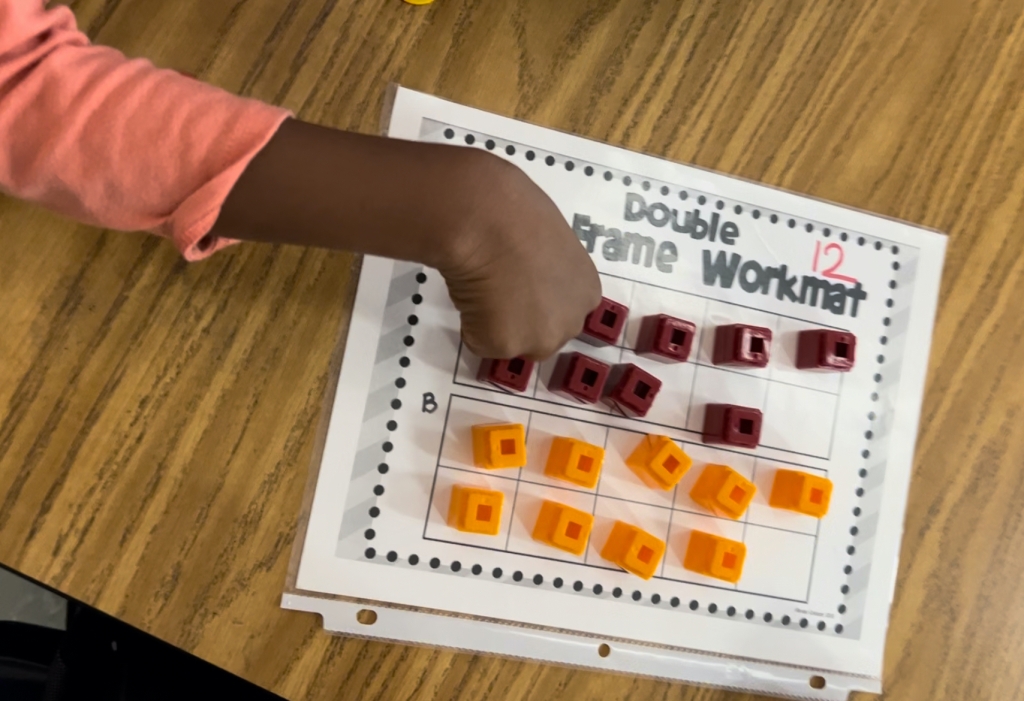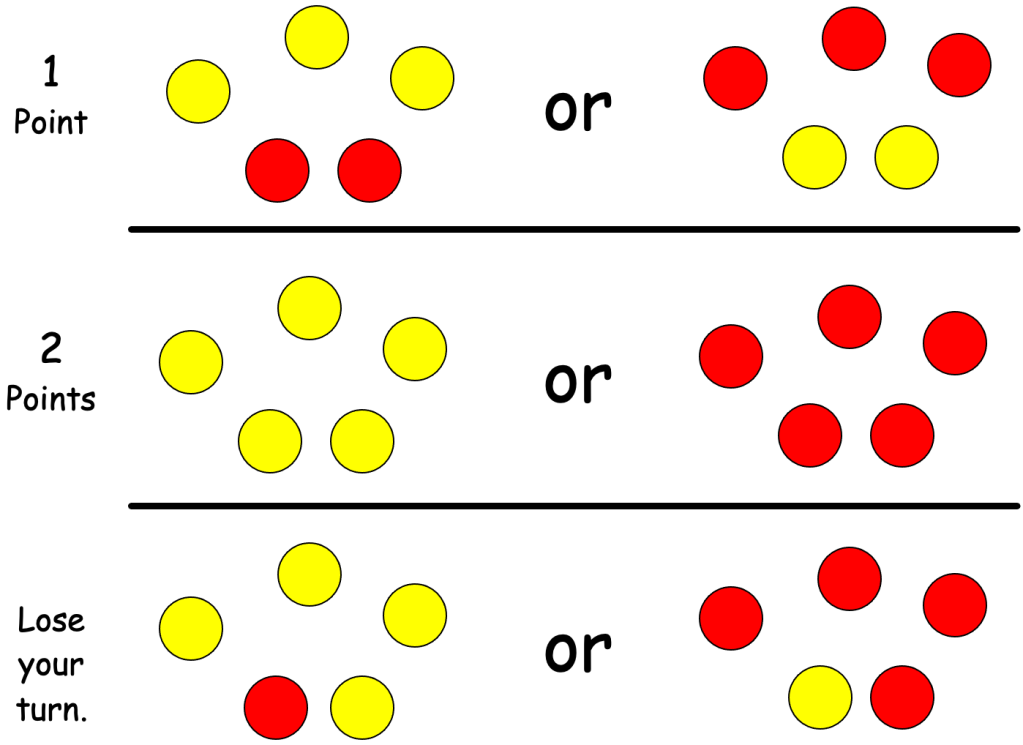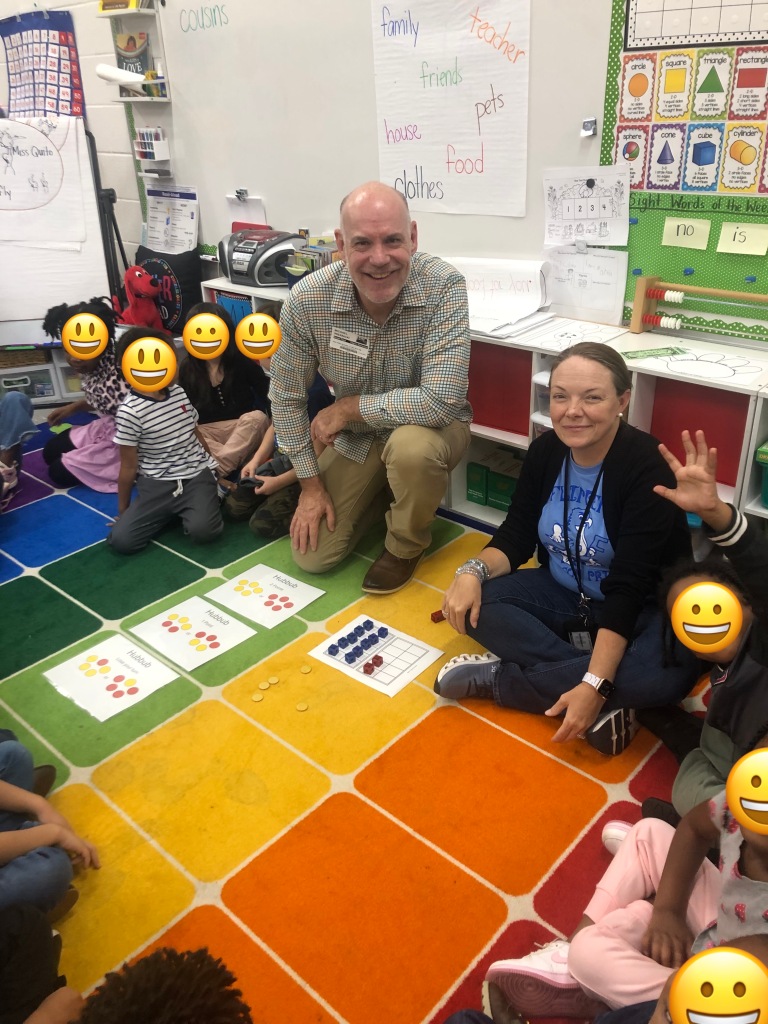A partner game for developing student flexibility with number combinations to five and ten (or even 20) that has connections to the first Thanksgiving.
If you teach Kindergarten, this post (and game) is for you! Ok, 1st Grade teachers can use this too, in the beginning of the year, or with more ten frames.
I can’t believe I haven’t written a post about this. I learned about Hubbub about 17 years ago, when I was just starting as a math coach in my district. I heard in mentioned in a video that some Kindergarten students were watching to learn about the first Thanksgiving. Apparently, children played Hubbub at the first Thanksgiving. I jotted down the rules and added a double ten-frame as a score board.
Materials needed:
- 5 two-color counters per pair of students
- Double ten-frames (one per pair) (one per student, if working on composing numbers to 20)
- Cubes (10 per student) (20 per student if each child has a double ten-frame)
Rules:
- The object of the game is to score 10 points (or 20 points if you use a double ten-frame for each student).
- Players alternate shaking and spilling the 5 two-color counters. A player continues their turn (shaking and spilling counters to earn points) until they shake and spill 4 counters of one color and 1 counter of another color.
- Points are scored according to how the two-color counters land (see scoring sheet linked below):
- If the counters show 3 of one color and 2 of another color, the player earns 1 point.
- If all five counters show the same color, the player earns 2 points.
- If the counters show 4 of one color and 1 of another color, the counters get passed to your partner.
- Players keep score by placing cubes on a ten-frame for each point earned. Players never lose the points they earn.
Teaching the Game
This is a partner game. I always model this game with the teacher on the carpet and we talk about the rules of the game, how to toss the counters, and good sportsmanship.
I sometimes use same-different images as an opener to this game. The slides for these can be found below, along with my lesson notes (standards included).
I introduce the two-color counters and then I shake them in my hands and gently drop them on the carpet. The counters will show one of six combinations:
As you can see, the possibilities are grouped by combinations to five (3 yellow and 2 red or 3 red and 2 yellow, etc.)
These combinations have scores/ consequences associated with them.

As we model the game, each time a new combination shows up, we discuss what happens. The scores and consequences for each pair of combinations is shown below.
A players turn only ends if they roll 4 of one color and 1 of another color. This is important, because most games we play with students, players each take one turn after each roll. We continue to model playing the game discussing good sportsmanship and asking questions, like “How many more do I need to get to 10?” “How many points do you have?” “Who has more points?”.
When someone wins – almost always not me – we ask the students if they are ready to play. The teachers pair the students with their partners, and we give them their materials. Students then begin to play and we monitor, asking students questions about combinations to five and 10 as they play. Students get very excited and, since we model it, we often hear students who do not “win” say, “That was a good game, would you like to play again?”
Hubbub Materials
- Same-Different Images Hubbub
- Hubbub Scoring Slides
- Hubbub Scoring-One Pager
- Hubbub Lesson Notes (CCSS)
- Hubbub Lesson Notes (Georgia)
If you use this game, please share your experiences. I’d love to hear how you may have changed the game to suit your students’ needs.
Full disclosure here – I never won this game (17 years of playing) until last week when I went to my wife’s school to teach this to the Kindergarten classes before Thanksgiving break. They took a picture because it was the first time I ever won!



